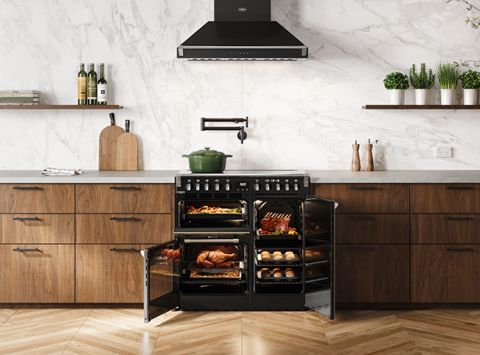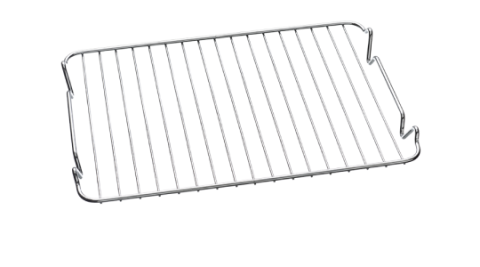
Cleaning your Belling Oven
Here’s our tips on how to get make the unfortunate grubby chore a little easier, so you can have a sparkling clean oven with minimal effort.
Quick wipe every time
After cooking up a storm in your wonderful Belling oven, give the base a wipe clean after every use – this will eliminate any build-up of debris.
Remove the racks and rails
All Belling ovens are fitted with removable furniture (side rails and racks) to assist with easy cleaning. Pop the racks off, spray with non-caustic foam cleaner e.g. (Mr Muscle) and let sit for a few minutes (especially if they are really dirty). Next, soak the racks with warm soapy water for at least 10 to 20 minutes and then use a sponge or dishwashing brush to scrub off any remaining residue. Rinse clean and your furniture should be sparkling again!
Non-caustic cleaners only
There are different cleaning products you may use when you’re cleaning your oven. There are many on the market but we recommend a non-caustic cleaner such as Gumption. Gumption can be used on the whole oven (except for facia) and is excellent for cleaning the enamel interior and stove top. When cleaning your facia panels we only recommend using warm water.
Cleaning around the grill element
To clean the top of the oven and around the grill element, secure a cloth to a wooden spoon with an elastic band and squeeze on a little bit of oven cleaner to clean the area (no caustic sprays). This is great for reaching those small and hard to reach areas.

General period of oven maintenance
For standard oven use, your appliance will only need to be cleaned every 6 weeks if you keep on top of it with daily wiping. For those who enjoy messy cooking including weekly roasts, your oven is likely to need a clean more often, usually 2-3 weeks. For cleaning an oven after months of heavy use, use Gumption cleaner and a non-metallic scourer for spot cleaning baked on grease.

Cleaning the glass
To clean the inside glass, we recommend using warm soapy water to remove grease. Any baked on food can be removed by using a scrapper blade. Once the glass is grease free, use a microfiber cloth to finish to prevent streaking.
For the outer glass use Cerapol and a microfiber cloth to remove dirt and ensure a streak free clean.
Cleaning stainless steel fascias
When it comes to cleaning stainless steel you can use a stainless steel cleaner and wipe gently, or you can use hot soapy water. Baby oil can also be used to restore stainless finishes but only use a few drops!
On the top
The easiest cooktops to clean are usually induction and ceramic. For these, we suggest using Cerapol and a microfiber cloth to remove dirt and ensure a streak free clean.
For gas cooktops, remove any parts such as trivets and clean using the instructions on the next tip. For the cooktop itself, take a hot soapy cloth and place on any stubborn dried on food that has escaped the pan while cooking. After a minute or two, wipe clean.
Know your trivet type
Our recommendations for cleaning trivets depends on whether you have enamel trivets or cast iron. If you have enamel trivets, we recommend washing in hot soapy water. If you have cast iron trivets these should only be wiped down with a damp sponge (or rubbed with oil and salt), never immersed in water. Cast trivets should also be dried off in a warm oven in order to ensure there’s no residual dampness which can cause rust.
Hopefully these tips will take away some of the head ache that comes with oven cleaning and you will be enjoying a sparkling clean oven in no time.

